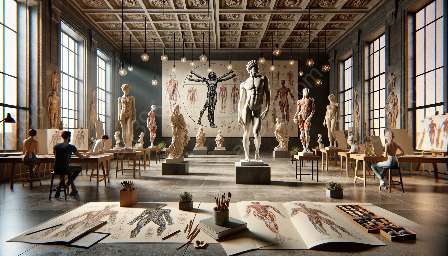Gesture drawing is a fundamental technique in the practice of art and is deeply intertwined with the study of anatomy. By exploring the primary objectives of gesture drawing, we can gain a better understanding of its significance and impact on artistic expression and anatomical study.
Understanding Gesture Drawing
Gesture drawing, also known as gestural drawing, involves capturing the essence and movement of a subject with quick, expressive strokes. It prioritizes the artist's intuitive and dynamic response to the subject, rather than focusing on meticulous details. The primary objectives of gesture drawing encompass various aspects that contribute to its importance in the realm of art and anatomy.
Fostering Creativity and Visual Observation
One of the key objectives of gesture drawing is to foster creativity and develop the artist's ability to observe and interpret the human form. By practicing gesture drawing, artists can train their eyes to see and understand the underlying structure and gestural dynamics of the human body. This process enhances their visual perception and enables them to capture the essence of movement and form in a spontaneous and expressive manner.
Conveying Dynamic Expression
Gesture drawing aims to convey the dynamic qualities and energy inherent in the subject. It serves as a means of expressing emotion, vitality, and gesture through the fluidity of line and form. By exploring the primary objectives of gesture drawing, artists gain a deeper understanding of how to infuse their artwork with a sense of liveliness and vitality, capturing gestures that evoke a powerful emotional impact.
Relating Gesture Drawing to Anatomy
Gesture drawing is closely linked to the study of anatomy, as it provides a foundation for understanding the body's underlying structure and movement. Artists who practice gesture drawing develop a heightened awareness of anatomical proportions, muscle dynamics, and skeletal relationships. This knowledge enhances their ability to capture the natural flow and rhythm of the human form, resulting in artwork that is anatomically accurate and dynamic.
Embracing Artistic Anatomy
Artistic anatomy delves deep into the internal and external structures of the human body, enabling artists to create realistic and anatomically correct representations. Gesture drawing serves as a bridge between artistic anatomy and artistic expression, allowing artists to translate their anatomical knowledge into dynamic and evocative drawings. By mastering the primary objectives of gesture drawing, artists can integrate their understanding of anatomical principles into their creative process, producing engaging and compelling artwork.
Conclusion
Understanding the primary objectives of gesture drawing unveils its pivotal role in nurturing creativity, enhancing visual observation, conveying dynamic expression, and establishing a strong connection with artistic anatomy. By recognizing the interplay between gesture drawing and anatomy, artists can enrich their artistic endeavors and create compelling representations of the human form that resonate with vitality and authenticity.

